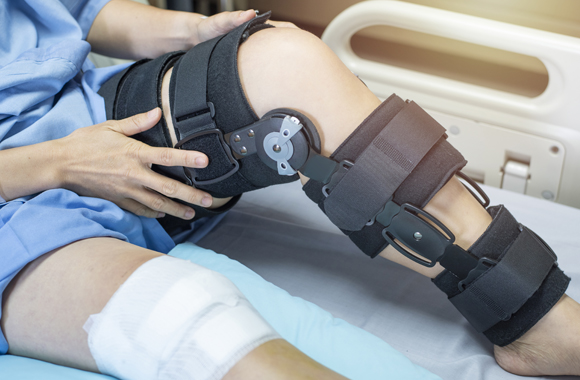Symptoms of an ACL Tear
If you have torn your ACL, you may have one or more of the following symptoms:
- Popping sensation in the knee at time of injury
- Severe pain
- Inability to continue activity
- Rapid swelling
- Loss of range of motion
- Feeling of instability
- Warmth to the touch

Causes of an ACL Tear
An ACL tear can occur in a myriad of ways and is seen regularly in both contact and non-contact sports. Some of the most frequent ways that an ACL tears is through:
- Sudden change in direction
- Landing on one leg
- Blunt trauma to the knee
- Hyperextension of the knee
- Weakened ligaments due to inadequate conditioning
- Repetitive stress
- Twisting movement
Diagnosing an ACL Tear
The first step in diagnosing an ACL tear is a physical examination of the knee to determine locations of tenderness and your range of motion. Your initial assessment will often include the use of a diagnostic test known as the Lachman test. The Lachman test is an examination technique in which you lie on your back, and your physician bends your affected knee to determine the joint’s stability.
Once the Lachman test is performed, your sports medicine physician will likely recommend the use of diagnostic imaging tests to determine the presence of any bone fractures and the extent of the damage to your ACL. Standard diagnostic tests include:
- X-rays
- Magnetic resonance imaging (MRI)
- Ultrasound
Treatments for an ACL Tear
An ACL tear can often be very severe and usually requires a type of reconstruction surgery. However, there are individuals who qualify for nonsurgical treatment, which entails:
- RICE: rest, ice, compression, and elevation
- NSAIDs: non-steroidal anti-inflammatory drugs
- Physical therapy
- Wearing a knee brace
For more serious injuries or for highly active individuals, a reconstruction surgery is almost always recommended to return to previous function. There are three types of ACL reconstruction surgeries:
- Autograft: reconstructs the ACL with the patient’s own tissue from somewhere else in their body
- Allograft: replaces the ACL with a donor’s tissue
- Synthetic Graft: restores the ACL with artificial materials
Following an ACL reconstruction, your recovery will entail pain management, incision care, a form of walking assistance, and a considerable emphasis on rehabilitation to restore mobility and strength to the joint.

